History comes full circle with Japan-U.S. summit in Columbus
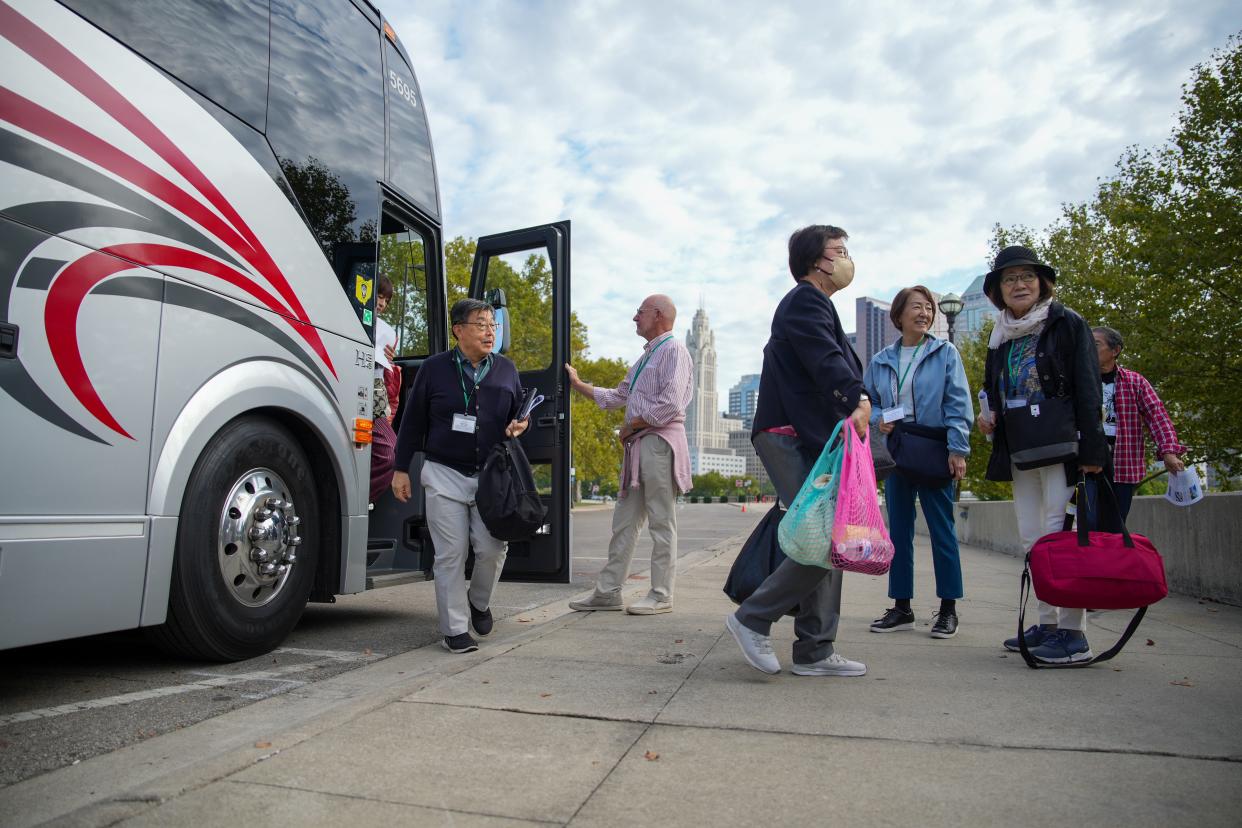
- Oops!Something went wrong.Please try again later.
On Wednesday morning, descendants of three men — two American, one Japanese — who shaped the history of 19th-century trans-Pacific relations boarded a tour bus together in downtown Columbus.
As the bus trundled down Broad Street, Matthew C. Perry, 82, a retired ornithologist from Maryland, looked out the window at landmarks the group’s tour guide pointed out: the Ohio Statehouse, Columbus City Hall and the Scioto waterfront.
Perry is the namesake of his great-great-granduncle, a U.S. Navy commodore often cited in history textbooks for opening up Japan to the outside world in 1854 using “gunboat diplomacy.” Across the aisle from him on the bus sat the descendants of two other men who are lesser known, but perhaps equally significant in the history of U.S.-Japan relations.
In 1841, William Whitfield, an American whaling ship captain, rescued four shipwrecked Japanese fishermen from a small, rocky island in the Pacific. Whitfield befriended one of the fishermen, a teenager who then went by only one name: Manjiro. Returning with him to Massachusetts, Whitfield arranged for Manjiro to attend school for mathematics and navigation. Manjiro spent a decade in the U.S., working as a whaler and a miner in the California gold rush before returning to Japan several years ahead of Commodore Perry’s expedition.
Manjiro is credited with introducing Japanese officials to the English language and certain Western technologies, laying the groundwork for Perry’s mission.
“When...Manjiro returned to Japan, it was as if America had sent its first ambassador,” President Calvin Coolidge would say decades later.
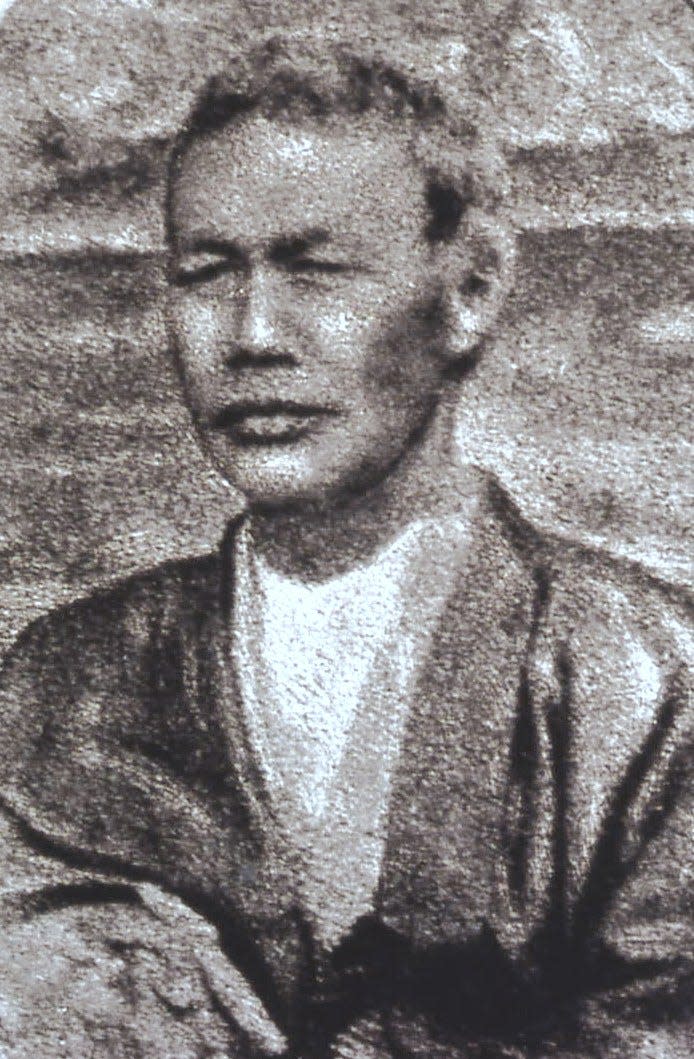
Manjiro and Whitfield’s friendship inspired the creation of the Tokyo-based Center for International Exchange — the organization responsible, along with the Japan-America Society of Central Ohio (JASCO), for bringing their descendants together in Columbus this week as part of the 30th annual Japan-America Grassroots Summit.
Hosted in alternating Japanese and U.S. cities nearly every year since the 1990s, the summit allows citizens from a variety of backgrounds to visit each other’s countries, attend workshops and lectures, and spend time with local homestay families. After a COVID-related hiatus, this year’s summit is the first since 2019’s in Hyogo, Japan, and Columbus follows other American cities like Atlanta, San Diego, and San Francisco putting on the event.
Beside Manjiro’s, Whitfield’s and Perry’s descendants, the tour bus on Wednesday was nearly full of Japanese visitors, ranging in age from high schoolers to retirees.
Kyo Nakahama, 59, who is Manjiro’s great-great-great-granddaughter and works for a technology company in Nagoya, Japan, told The Dispatch that the summit is a continuation of the friendship that Manjiro and Whitfield began nearly two centuries ago.
“(The) Nakahama family and Whitfield family connect(ed) even during difficult times. I think that’s very important,” she said.
“My biggest takeaway over the last 30 years of doing these summits, is that people are people, it doesn't matter where you live ... (or) what side of the ocean you're on,” said Scott Whitfield, who is a police sergeant in Washington, D.C. and a fifth-generation descendant of Captain Whitfield.
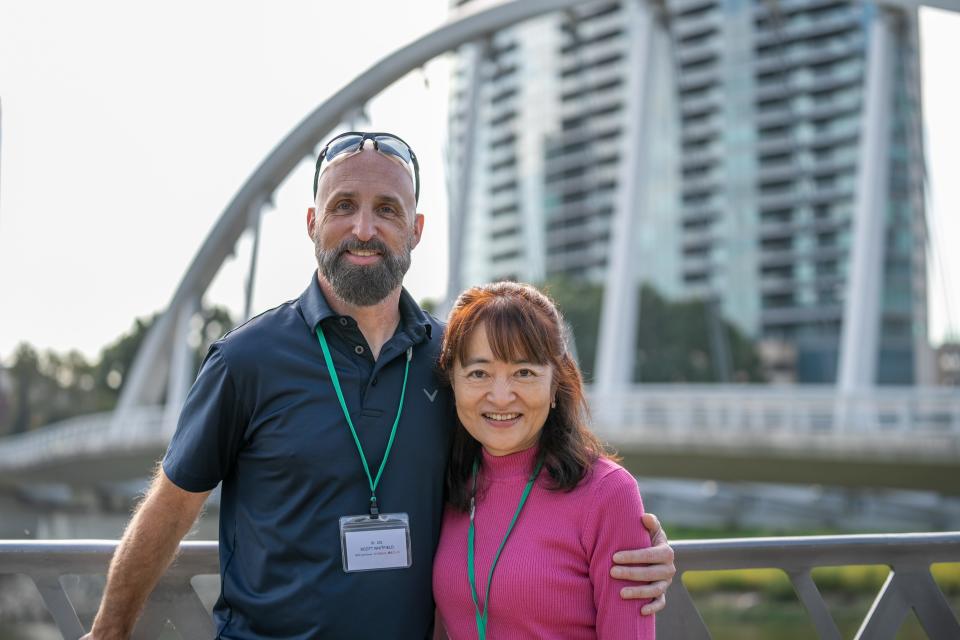
Influence on U.S.-Japan relations
In 1853, Commodore Perry sailed into Tokyo harbor with a heavily armed squadron of steam-powered ships and delivered a message from President Millard Fillmore advising Japanese authorities to open trade relations with the U.S. By the next year, Japan had agreed to open up port access to U.S. ships, marking the beginning of diplomatic relations, according to an article in Smithsonian Magazine.
Though Commodore Perry’s display of overwhelming naval power is often described as “gunboat diplomacy,” Perry the ornithologist disfavors the term.
“Matthew wasn't a fighter, he was a diplomat,” he said.
“The Japanese already knew a lot about Americans from what they got from Manjiro — Manjiro helped Commodore Perry, because he told the Japanese officials we weren't barbarians,” he added.
Japan’s opening up to the outside world led to a technological transformation of the country, eventually contributing to its imperial expansion in East and Southeast Asia in the early 20th century.
While there have been interruptions in the U.S.-Japan relationship, most notably with World War II and the bombing of Hiroshima and Nagasaki, the U.S. is now one of Japan’s most important military allies.
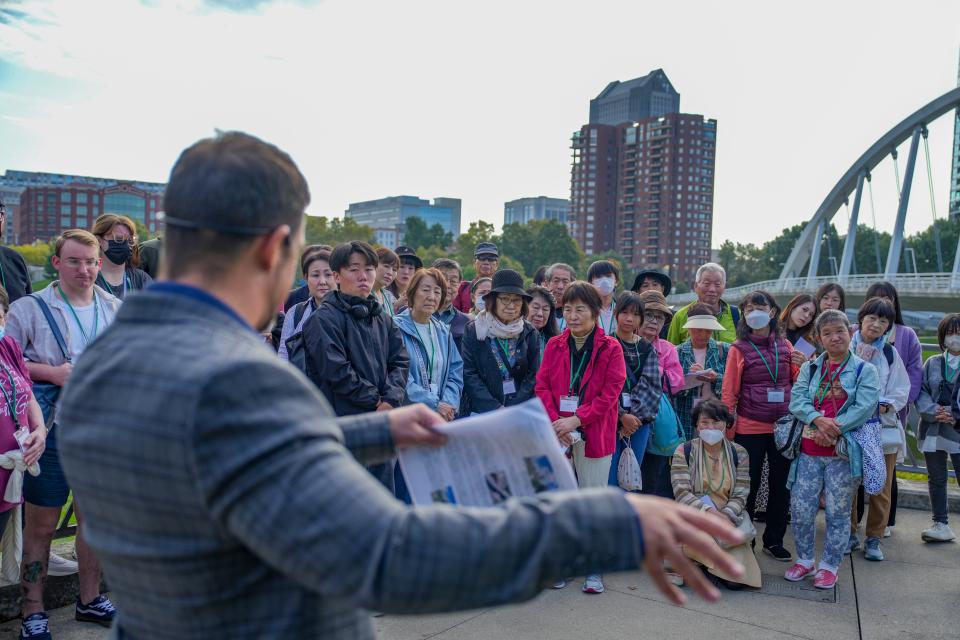
Exploring Columbus
“We’re the capital for the state of Ohio, and I believe that means something in Japanese, doesn't it — Ohio?” said tour guide Jeff Lafever from the front of the bus.
Passengers murmured “ohayo” in response, which is Japanese for “good morning.”
“We learned that when Honda moved to Columbus in the mid-1980s,” said Lafever.
Nearly 11,000 Japanese residents live and work in Greater Columbus, according to JASCO, and many of them are connected with Honda’s plant in nearby Marysville. (Honda is also the summit’s primary sponsor.)
Sitting at the rear of the bus, Maho Tanahashi, 31, an employment counselor from Nagoya, remarked on the large number of cars and lack of trains in Columbus, as compared to Japan.
“Nagoya is very crowded, but here not so much,” she told The Dispatch.
While the summit is geared at building people-to-people relationships, the lectures and workshops also discuss more painful aspects of both country’s histories.
After a stop along the Scioto River waterfront, the tour bus dropped off its passengers at the Native American Indian Center of Central Ohio, on Columbus’ South Side, for a cultural talk and lunch of smoked salmon, deer soup and fry bread.
Project Director Ty Smith performed a welcome ceremony, beating an animal-hide drum and chanting Lakota, before delivering a short lecture on Native American symbols.
Hiroaki Kawamura, a Japanese American anthropologist and University of Findlay professor who has lived in Ohio since 1998, compared the U.S. treatment of Native Americans to Japan’s treatment of the indigenous Ainu people.
“When we look at the world, oftentimes, ethnic minorities or indigenous people, are controlled or influenced by dominant groups. We are repeating the same thing,” he said.
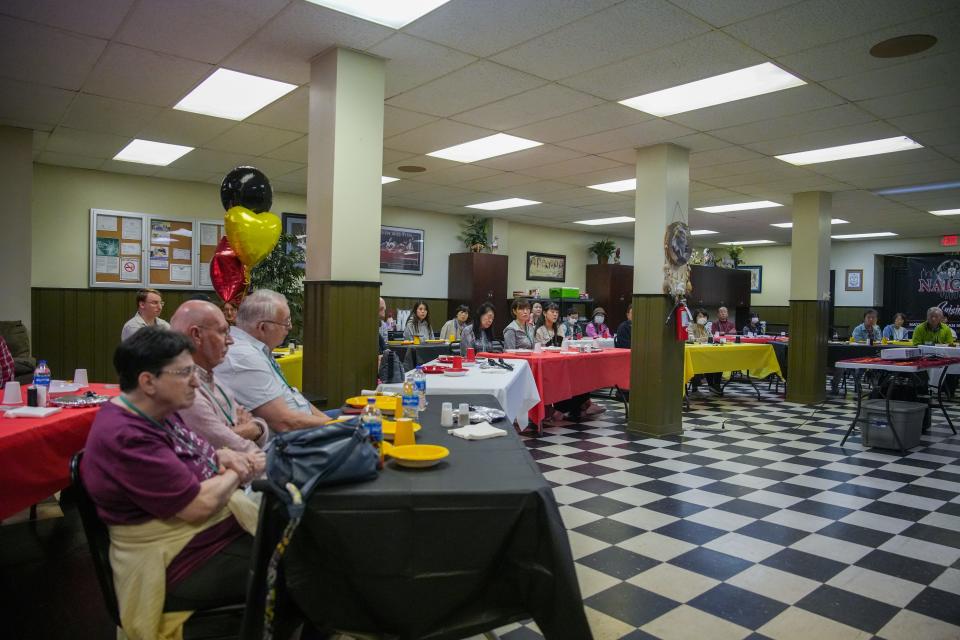
A legacy of friendship
Manjiro returned to Japan in 1850 to reunite with his mother, but he made one last visit to Captain Whitfield in Massachusetts in 1870.
And the friendship that began with the two men has continued across every subsequent generation, according to both families.
“It’s one of the longest standing relationships between two families in world history, as far as both families know,” said Scott Whitfield.
Nakahama, Manjiro’s descendant, said that the summit's homestay experiences have opened up America to her and her family members, and other like them from Japan.
“If Manjiro were alive today, he would join with us. … He (thought) this relationship between USA and Japan is very important. Maybe he would join with us and spread peace, and love.”
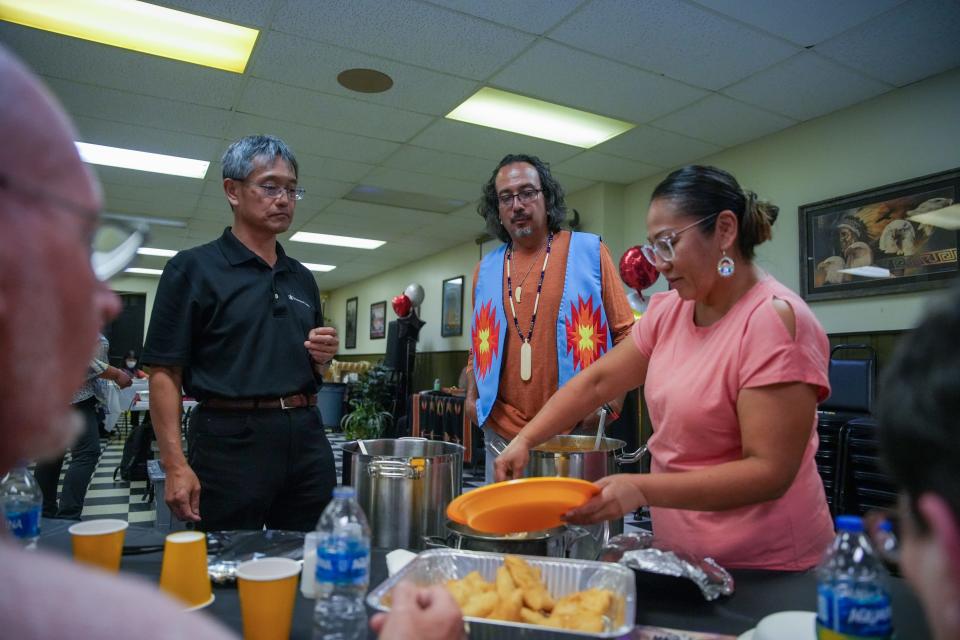
Peter Gill covers immigration, new American communities and religion for The Dispatch in partnership with Report for America. You can support work like his with a tax-deductible donation to Report for America at: bit.ly/3fNsGaZ.
pgill@dispatch.com
This article originally appeared on The Columbus Dispatch: History comes full circle with Japan-U.S. summit in Columbus

